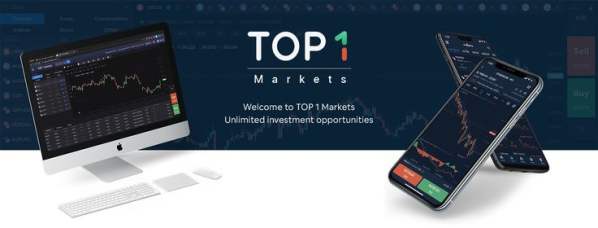
The U.S. dollar rose for a third straight session on March 7, with the U.S. dollar index hitting a high of 99.42 since May 2020, as the possibility of sanctions on Russian energy exports pushed commodity prices soaring, fueling concerns about stagflation, sending U.S. stocks lower. , U.S. Treasury yields rose. EUR/USD falls for five days, hits 22-month low of 1.0805
On Monday (March 7), the U.S. dollar index rose 0.77% to 99.25, and the U.S. 2-year Treasury bond yield rose 7 basis points to 1.55%, partly affected by corporate bond issuance; the 10-year breakeven inflation rate climbed to a record high , the U.S. dollar Libor rose to its highest level since April 2020.
EUR/USD dipped 0.74% to $1.0853, off session lows of $1.0805 on short covering as European officials were divided on whether to sanction Russian oil exports even as Europe seeks to reduce its reliance on Russian gas.
EUR/CHF was up 0.19% at 1.0042 after falling below par for the first time since January 2015, while EUR/AUD was down as much as 1.8% to hit its lowest level since July 2017, before paring losses.
Markets are worried that rising energy prices will trigger stagflation and hit Europe's economy as it tries to recover from the pandemic.
Oanda senior analyst Edward Moya said the conflict between Russia and Ukraine continues to send prices of multiple commodities surging further, threatening growth prospects this year.
Growing jitters in the market could support the dollar because you're going to see the U.S. economy still in a good position in the short-term as it is less dependent on Russia for energy supplies than Europe, which could be positive for the dollar in the short-term, Moya said .
The euro-dollar volatility gauge climbed to its highest level since March 2020 after the Russia-Ukraine conflict.
Joe Manimbo, senior market analyst at Western Union Business Solutions, said the euro, which has lost 3 percent in three days and held above $1.08 on Monday, will need to watch over the next few days if it will break above $1.0806. Markets are likely to be cautious in pushing the euro further down ahead of the European Central Bank meeting on Thursday.
Europe is the most vulnerable because it imports as much as 40% of its natural gas from Russia, and the euro is increasingly linked to oil prices, the higher the price, the more the euro falls.
John Hardy, head of FX strategy at Saxo Bank, said the euro continued to bear the most pressure on major currencies from the fallout from the war in Ukraine.
According to Goldman Sachs, a sustained $20 rise in oil prices would reduce real economic growth in the euro zone by 0.6%, while real economic growth in the United States would drop by 0.3%. But in a more unfavorable scenario, if Russian gas shipments through Ukraine are cut, the euro zone's GDP could fall by as much as 1% due to gas alone.
USD/JPY rose 0.37% to 115.27, boosted by higher oil prices and higher bond yields; stops were said to be placed above 116.00.
GBP/USD fell 1.02% to 1.3102, its lowest level since November 2020; EUR/GBP rose.
USD/CAD rose 0.67% to a 1-week high of 1.2819, reversing risk to its highest level since May 2020.
The Australian dollar, which tends to follow commodity prices, fell 0.81% against the greenback, after rising as much as 1% earlier.
Preview Tuesday
01:00 a.m. EIA releases monthly short-term energy outlook report 06:15 a.m. RBA President Lowe delivers a speech
Institutional viewBond market inflation expectations for U.S. and EU hit record highs
Ten-year inflation forecasts in U.S. and European bond markets rose to record highs, as oil prices continued to rise amid U.S. consideration of a ban on Russian oil imports. The 10-year breakeven inflation rate, measured by nominal U.S. Treasury and inflation-protected Treasury yields, rose as high as 2.785%, surpassing the previous all-time high set in 2005. A similar gauge in Germany rose as much as 23 basis points to an all-time high of 2.63%.
Investors' inflation expectations rose as crude futures rose as much as 13% to their highest level since 2008, signaling a rise in gasoline prices, a key component of the U.S. consumer price index. The United States is considering a ban on imports of Russian oil to punish Russia for its invasion of Ukraine. Other commodity prices also rose.
John Briggs, global head of Americas strategy at NatWest Markets, said the longer the conflict lasts, the stickier and more persistent the inflationary impact. The forecast is the breakeven inflation rate for U.S. 10-year inflation-protected securities. The yield difference between inflation-protected Treasury bonds and conventional Treasury bonds represents the average inflation rate required to achieve the same return over the life of the bond.
The breakeven inflation rate widened as the yield on inflation-protected Treasury bonds fell and nominal Treasury yields rose. The yield on the 10-year inflation-protected Treasury bond briefly fell to -1.02%, while the 10-year nominal Treasury bond yield briefly rose to 1.8%.
Such Treasuries will outperform nominal Treasuries in 2021 by a historically rare rate as rising inflation fuels demand for inflation-protected Treasuries. That trend reversed sharply in January and early February, as Fed officials signaled they would raise interest rates more if necessary to fight inflation. But since the war between Russia and Ukraine, the performance of inflation-protected Treasuries has also picked up as the prices of commodities like crude oil and wheat have soared.
Leave a Reply